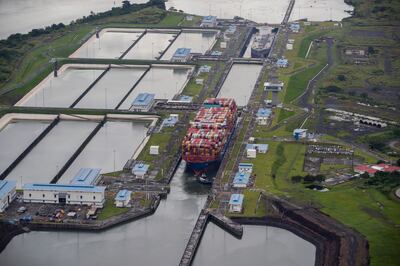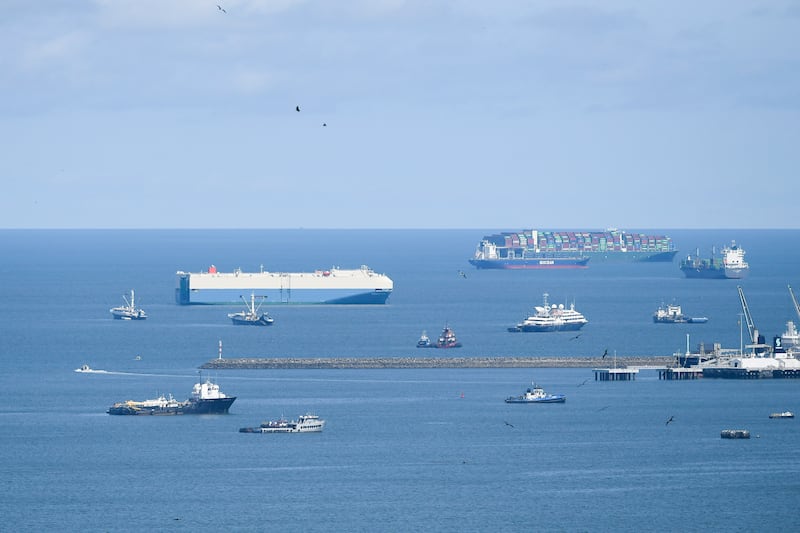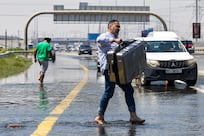Traffic on the drought-hit Panama Canal will be restricted for one year, as boats line up to enter the waterway linking oceans.
The canal is short of the rainwater needed to transfer ships through locks, engineering marvels that move six per cent of the world's maritime commerce up and over the isthmus between the Atlantic and Pacific oceans.
Ilya Espino, the canal's sub-administrator, told AFP that unless heavy rains fall in the next three months, “we are looking at a period of one year” of restricted access.
That period will give clients “a year to plan” how to adapt, she said on Thursday.
Each ship entering the canal requires 200 million litres of freshwater to move it through the locks. It is provided by two artificial lakes fed by rainfall into a watershed. The lakes also supply drinking water to half the country of about 4.2 million people.
However, Panama is facing a serious drought, made worse by the El Nino warming phenomenon, which has forced canal administrators to restrict the waterway to ships with a maximum draft (water depth) of 13.11 metres.
In 2022, an average of 40 ships crossed through the canal a day, a number which has now dropped to 32 to conserve water.

The measures have caused a tailback of ships waiting to enter 80-kilometre canal, whose main clients are from the US, China, and Japan.
On Thursday, about 130 boats were waiting, compared to the typical 90.
Waiting times, usually between three and five days, have gone up to 19 days at times, although they stand at around 11 days.
This month, canal operators said the restrictions were likely to result in a $200 million drop in earnings in 2024 compared to this year.
To pass through the canal, vessels can reserve a slot, or try to buy one at auction. For the rest, there is a long wait.
“We easily handle a queue of 90 ships” waiting, but “130 or 140 ships cause us problems and delays”, said Ms Espino.
This week, Panama President Laurentino Cortizo denied an assertion by his Colombian counterpart Gustavo Petro that the canal was closed.
Mexican President Andres Manuel Lopez Obrador, also referred this week to the “special” situation facing the waterway.
“We have a restriction in Panama as we have had on other occasions, but it is not true that the Panama Canal is closed,” said Mr Cortizo.
The canal opened in 1914 after a construction project through dense jungles and mountains, with thousands of workers perishing from tropical disease, intense heat and rain.
Since then, more than a million vessels have travelled the canal, saving them a lengthy journey around the tip of South America.
“The big disadvantage that the Panama Canal has as a maritime route is that we operate with freshwater, while others use seawater,” canal administrator Ricaurte Vasquez told AFP this month.
“We have to find other solutions to remain a relevant route for international trade. If we don't adapt, we are going to die.”
Given the draft restrictions, some merchant container ships are forced to unload their cargo and send the lighter vessel through the canal, while the goods cross Panama by rail before being reloaded.
“Right now, I see that the situation is manageable, but we do have to show the industry that we are taking definitive steps to address the water problem,” former canal administrator Jorge Quijano told AFP on Friday.
“That for me is key, because otherwise we will be out of this business.”






